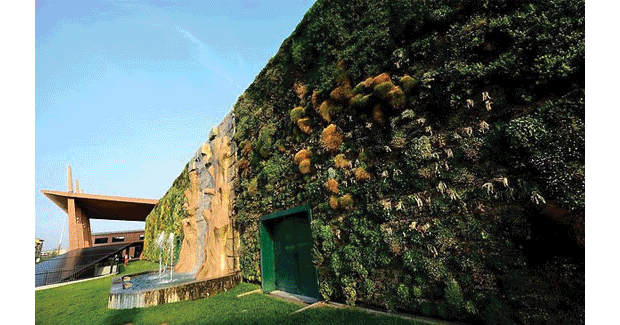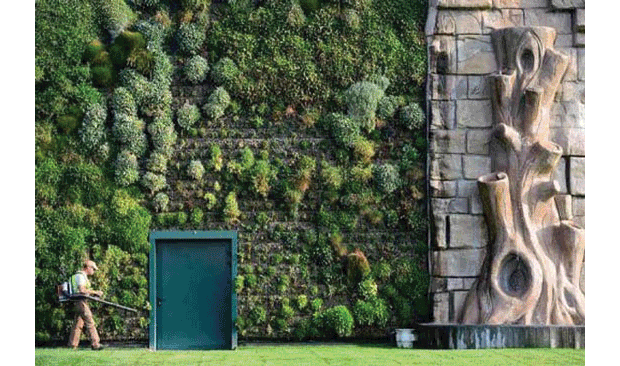|
Italian architecture is positively blooming after the
world's largest ever vertical garden was certified just outside of the
Italian city this week. The mass of greenery stretched across 1,263
square metres of wall space at a shopping centre in Rozzano just outside
of Milan.
Created by architect Francesco Bollani and delivered with the aid of
French architectural firm Montpellier, this vast wall of lush foliage
consists of a total of 44,000 individual plants, which are built into
the wall in a grid-like fashion the lead architect likens to building
with toy blocks.
“It took us a year to grow the plants in a greenhouse and 90 days to
build the facade,” Bollani says. “It was like building a giant Lego!”
|
|
 |
|
According to the the shopping centre’s director, Simon Rao, the design
feature will offer two distinct benefits, uplifting the shopping centres
façade with the stunning home-grown feature and providing functional
benefits by insulating the building and reducing its exposure to direct
sunlight, thereby creating energy savings and aiding in natural interior
climate control.
The plants will also filter carbon dioxide and act as further insulation
against noise pollution.
“This is sustainable architecture, which can combine beauty with energy
saving while respecting the environment,” says Rao.
While this feature is clearly environmentally sustainable, calling it
holistically sustainable may be a bit of a stretch. Coming in with a
price tag of 1 million euros, the garden wall is not exactly
economically sustainable.
|
|

|
|
Europe has a strong history of delivering vertical gardens, with the
previous largest such feature in Madrid reaching 844 square metres. The
prevalence of vertical gardens has grown, as the shopping centre
director would point out, because of their strong aesthetic mixed with
passive energy saving features.
While the practice of incorporating green walls is sometimes criticised
as being showy and representative of low-level greenwash, the
mainstreaming of incorporating plant life into the built form should
never be discouraged. This large-scale development is a sign of things
to come in the world of mainstream of architecture. |